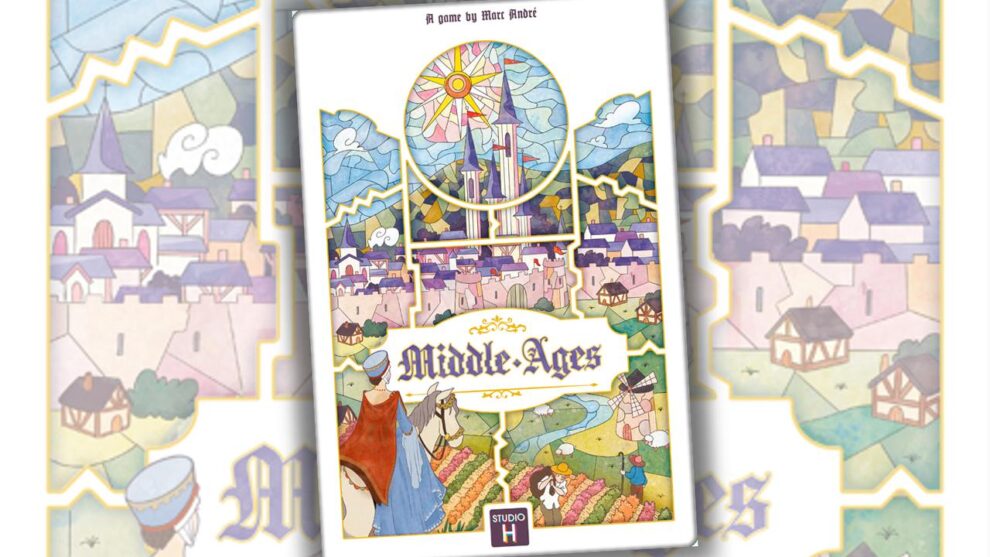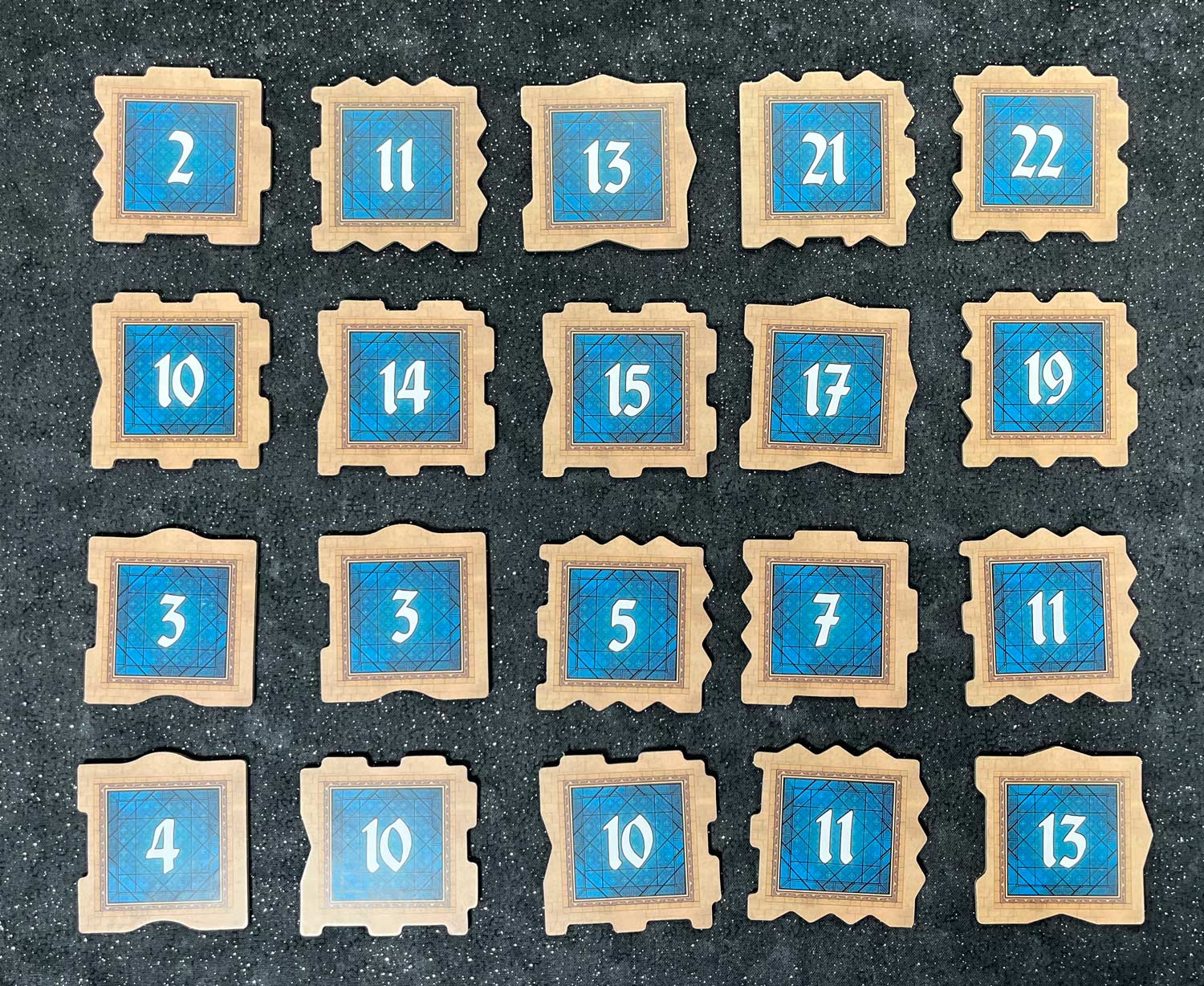Disclosure: Meeple Mountain received a free copy of this product in exchange for an honest, unbiased review. This review is not intended to be an endorsement.
Back in 2018 I reviewed a game called Majesty: For the Realm, a relatively lightweight tableau building game based around the concept of collecting cards to place into your “kingdom”. It was designed by Marc Andrê, fresh off his success with Splendor. Each card was one of 8 different types (Brewery, Mill, Inn, Palace, etc.) and each card provided a different income based on what cards you already had in your town. If you took a Mill card you earned 2 coins; but if you already had one, you earned 4 (2 coins per card), etc. Games were speedy, it was easy to teach, and I really enjoyed playing it. The only downside was that it didn’t seem to get much attention, and quickly went out of print.
So imagine my surprise when, earlier this year, I discovered that it was being reprinted, with dramatically improved artwork, tweaked gameplay, and a new identity.
Let me tell you about Middle Ages.

Middle Ages: the board game; way better than the Black Plague
If you’ve played the original game, skip ahead a bit and I’ll break down the primary differences, otherwise, keep reading and I’ll walk you through the game.
In Middle Ages, much like its predecessor Majesty: For the Realm, players are building a tableau—of tiles this time instead of cards. With each tile placed into your kingdom, players earn coins based on what tiles you might already have.
After setting up the game, players will be greeted with an array of tiles, a number across (based on player count) and 4 rows. Just like in Kingdomino, in player order players place their knight (a magnificent wooden marker) on one of the tiles in the first row. From then on order is determined by position in the row. The closer to the left you are, the earlier in the round you go. Pull your knight off its current position, take the tile it was standing on, and select a tile in the next row. In general tiles on the left are lower in value, while tiles to the right are higher.
The tiles themselves are gorgeously illustrated (almost like illustrated manuscripts), each distinct type not only featuring the same buildings, but also wonderfully die cut along all 4 edges. This means that as you place a tile into your kingdom it literally fits into place like it belonged—because it does. Once you place a tile, you perform that tile’s special effect (if applicable) and receive income based on the icons and value shown at the bottom of your player board.
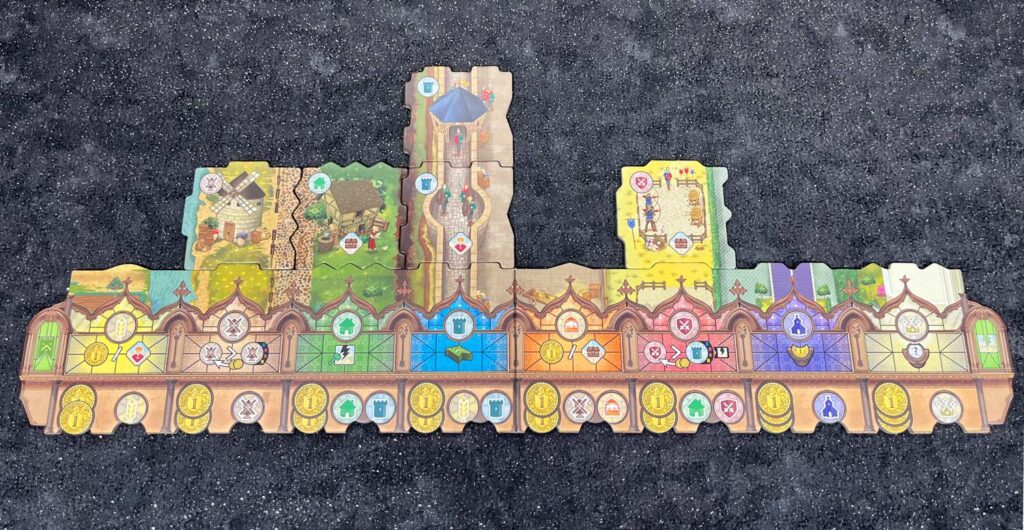
Tile special effects range from earning coins from other players for having more of a certain tile than they do, to destroying tiles in other players’ kingdoms, to being able to reserve tiles further ahead in the central display.
Most tiles will earn you 2 or 3 coins per existing tile already in your kingdom (some pay for more than one tile type). The Village tile for example pays 2 coins for each Village or Rampart tile in your kingdom—the more you have, the more you earn. Some tile special effects allow you to increase the value of a tile from 2 to 3, or the number of tile types you earn money for.
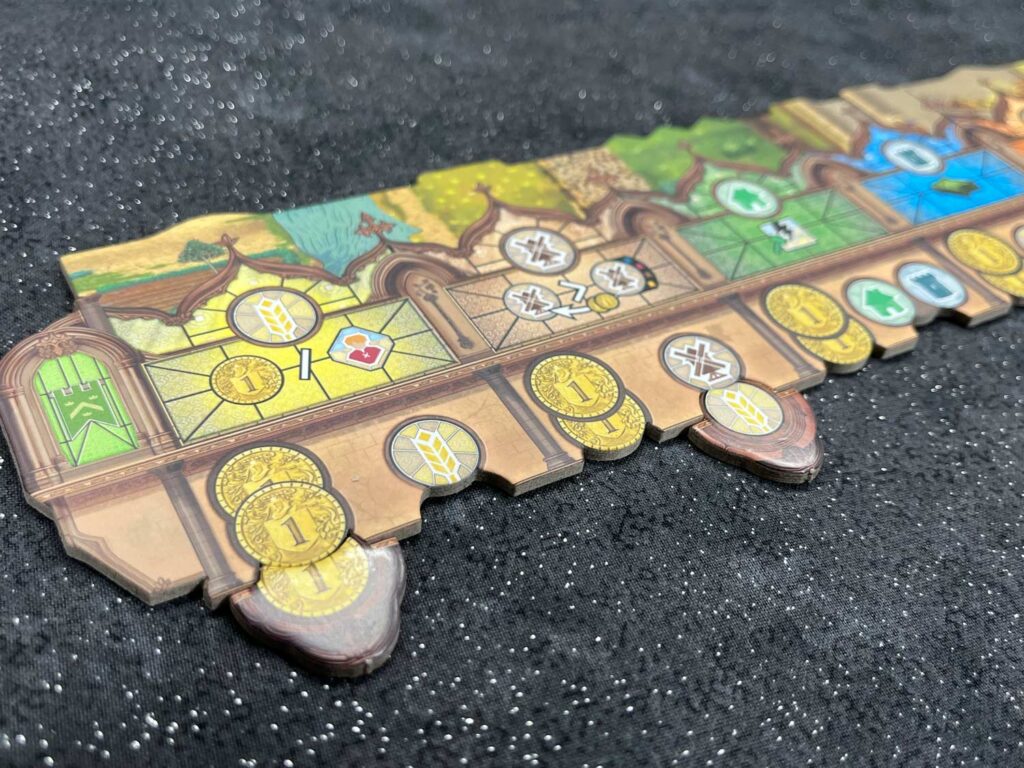
As you advance through the rows, you’ll set up new rows behind you. And after completing the 4th row, an event card is triggered. The cards are new to the game and are a mix of feast and famine. Many cards require you to pay a certain amount for each tile of a certain type in your kingdom, while other event cards destroy a specific building, causing you to place it into your cemetery, where you can hopefully recover it.
After players have worked their way through 16 rounds, the game ends and players tally up their scores. The only end game score adjustment required is to penalize each player 10 points if they don’t have at least one of each of the eight tile types in their kingdom.
Middle Ages vs Majesty: For the Realm—The Differences
Since I loved the original game, I was a bit skeptical about any changes. But I suppose if it was a good model to begin with, the game would have been more successful. So if you already know the original game, here’s the main differences.
Middle Ages uses tiles instead of cards. This is nice for a number of reasons. The cards from Majesty: For the Realm tended to bow slightly which meant they rotated and slid around easily. The tiles are rock solid, and not to mention SUPER cool with those die cut edges.

Middle Ages uses a Kingdomino style setup instead of an ever flowing river of cards. Tiles are laid out in a row, then ordered by the number on their back. Lower numbers mean lower value tiles. Then tiles are flipped over and that’s the last you see of the numbers.
Middle Ages features cardboard coins instead of the super cool mini poker chips from the original game. The upside of the cardboard is that each denomination has a different color and shape. And, thank God Middle Ages has a 5 value token. Read my review of the original Majesty: For the Realm game to understand my consternation at having a 1 and a 2 value coin, but not a 5.
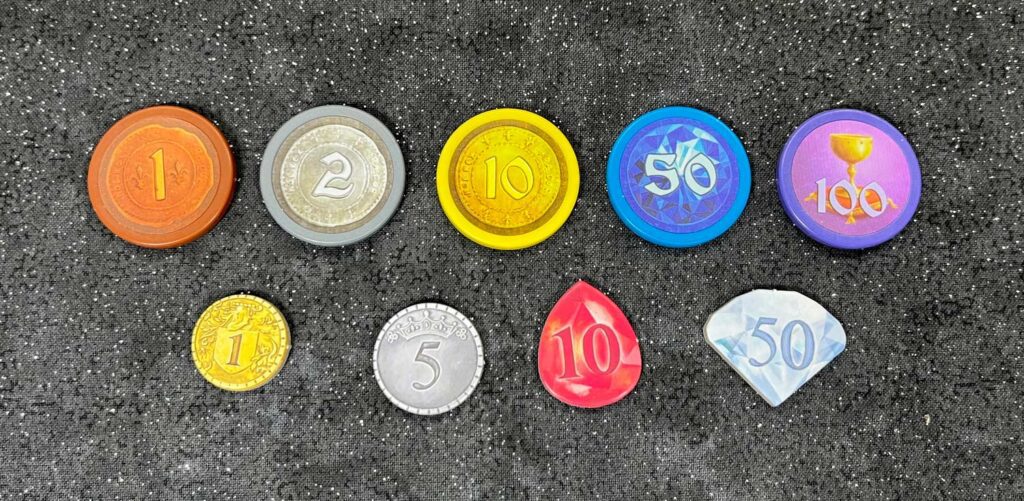
The artwork in Majesty: For the Realm was just fine, but the artwork in Middle Ages is fantastic—the detail is simply astonishing. Artist Claire Conan should receive some sort of award for her work. Not to mention that the box lid has gold leaf inlay and looks like a stained glass window; certainly a huge improvement.
For the most part, the gameplay in Middle Ages is streamlined. Rather than having to keep track of your peasants—sending them on to cards—you simply place your knight. The special effects for each tile also make things a bit more interesting. Yes, some of the cards in the original game had effects as well, but in the new game ALL of the tiles do, and that can lead to some anguish or greedy laughter depending on the player.
The event cards are new, and since you can look ahead to see what’s coming, you can at least try to plan for them. But this also means that players have the opportunity to block their opponents. And while my teammate Justin Bell hates events cards, I find that they add a dash of uncertainty and randomness to the mix.
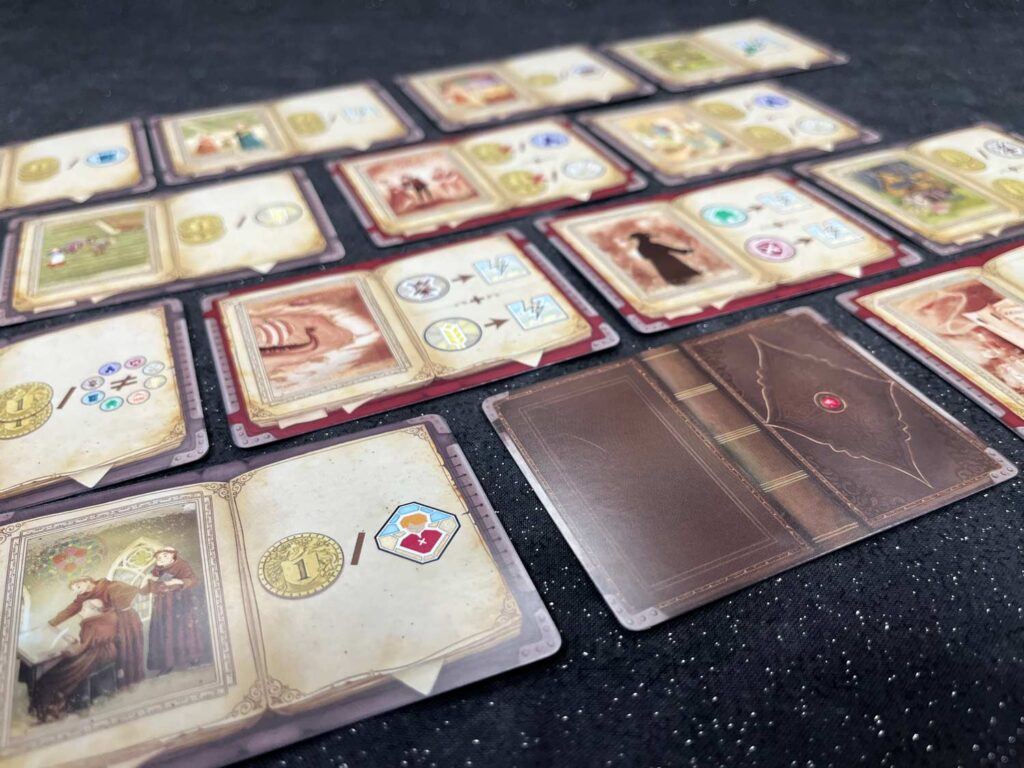
One thing I wish that Middle Ages would have kept was the majority card scoring. In Majesty: For the Realm players earned a number of points for having more of a certain tile than other players. Since there was no way you could have a majority in all of them, this meant you had to pick and choose which to focus on. Removing these scoring features is one of the reasons the gameplay is streamlined, but I still liked them.
All in all Middle Ages is a superior game, and I hope it succeeds where its predecessor failed.
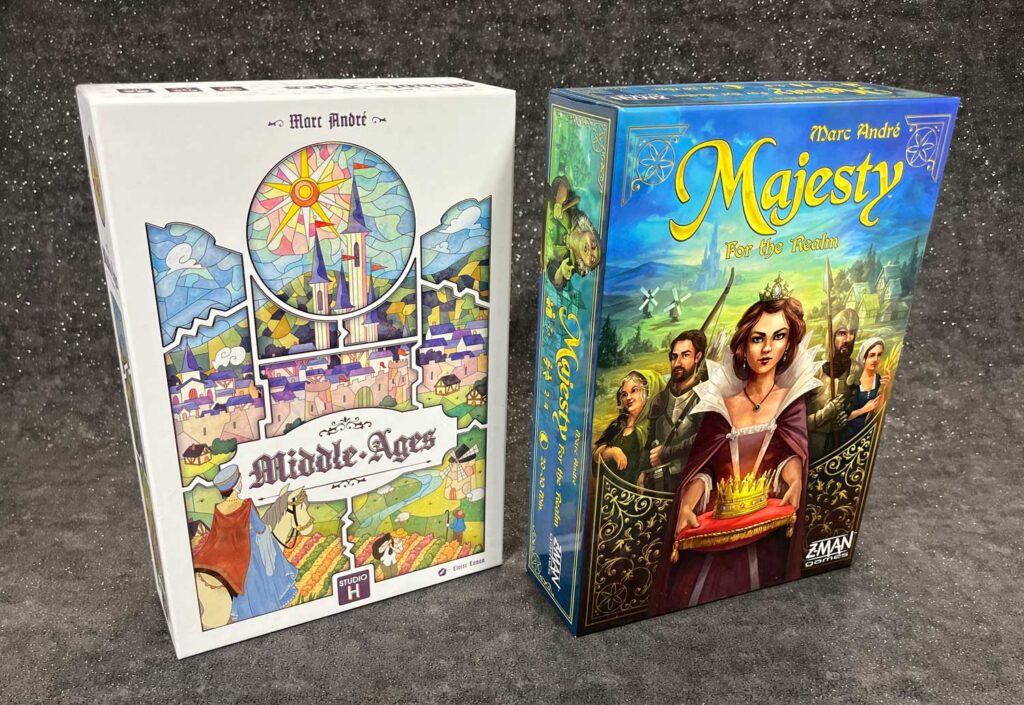
Middle Ages: A Retrospective
I’ve played this now with a number of different people and player counts, and while most gamers love Middle Ages, there have been a few that stated they’d never play it again. This is in part because it can be a bit unrelenting if the tiles don’t go your way. If someone jumps out to an early lead in Mills (whose effect is to gain 2 coins for every player who has fewer Mills than you) or even worse in Barracks (whose effect is to gain 2 coins from every player who has fewer Ramparts than you do Barracks—AND to destroy a tile in your kingdom), it can be hard to catch up. This is, unfortunately, one of the downsides of the randomly placed tiles.
One player was able to build up quite an engine, increasing the value of his Rampart tile, and also adding an icon to that tile. At one point in the game he earned 30 coins for placing a Rampart tile into his kingdom.
What this tells me is that there’s no one single way to win, but that you need to be able to look ahead to determine patterns in the tiles, and plan a strategy according to what’s visible—and hope your opponents aren’t doing the exact same thing.
I am thrilled to see this game back on shelves, even with a new name and form. It maintains most of the breeziness of the original, while ratcheting up the quality and value. If you get a chance to play or purchase Middle Ages, don’t pass it by. A game like this only comes around once every thousand years or so.


